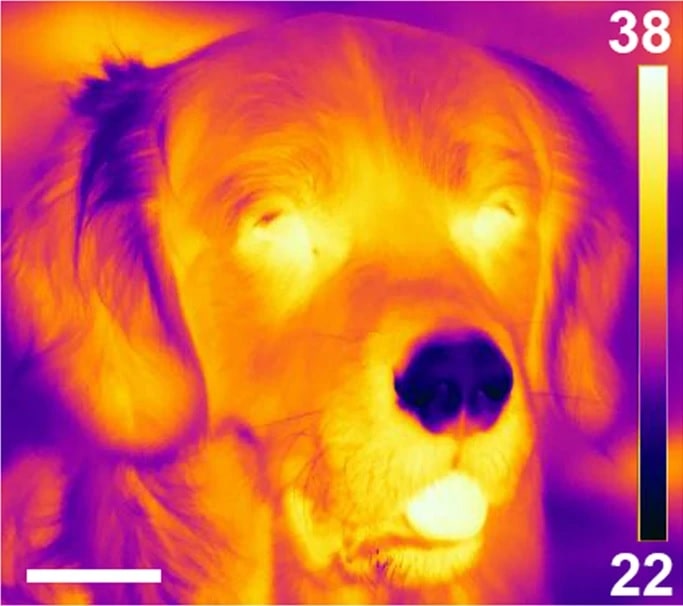If you’ve ever booped the snoot of a good boy—and I sure hope you have—you likely noticed his nose was smooth, wet, and cool. But it turns out the tip of a dog’s slobbery, nerve-packed nose—called the rhinarium—may do more than sniff. It may actually detect weak heat signatures.
“It’s a fascinating discovery,” ethologist Marc Bekoff, a professor emeritus at the University of Colorado, Boulder, who was not involved in the study, told Science. “[It] provides yet another window into the sensory worlds of dogs’ highly evolved cold noses.”
A team of researchers from Lund University in Sweden and Eötvös Loránd University in Hungary conducted a series of experiments to test whether dogs could pick up tiny thermal clues about their surroundings. They published the results in Scientific Reports.
First, the teams trained a group of three dogs to select objects that were warmed to about 80 degrees Fahrenheit. (An object set to room temperature was used as a control.) Scientists then covered the objects, which looked indistinguishable from each other, with black electrical tape and placed them about five feet from the dogs. In double-blind tests, the dogs selected the objects that were warmed.
The researchers then analyzed brain scans from 13 dogs who were exposed to “objects emitting neutral or weak thermal radiation,” Science reported. The region in a dog’s brain that connects with its nose (the left somatosensory cortex) lit up when the pups were exposed to the object with weak thermal radiation.
But there was no response in any part of the dogs’ brains that lit up in response to the neutral object. Researchers believe a dog’s rhinarium may be able to sense heat through thermal radiation, in which heat is transferred by shuffling photons.
“The exact mechanism of the thermoreception is as yet unclear,” Anna Bálint, of Lund University, told Gizmodo. “The structure of the dog rhinarium is different from known infrared-sensitive organs, such as the infrared-sensitive pit organs of crotaline snakes, so it may be that the underlying cellular-molecular mechanisms are different.”
It seems dogs have now joined an illustrious group of heat-sensing critters. Some types of snakes, for example, have heat-sensing pits below their eyes that allow them to slither after their warm prey with ease. Vampire bats are the only mammals to have been observed with thermoreception, and they use this sense to find prey whose blood they vaaant to suck.
The black fire beetle uses thermoreception to find conifer forests that have recently burned. The beetles have heat sensors on their legs, which are sensitive to low levels of infrared radiation. They seek out patches of smoldering forest to find food and lay their eggs in charred trees. Most of their predators have either fled or perished in the flames.
In the case of Fido, Fluffy, and Fifi, this sensory superpower may have adapted over time from their ancient wolf relatives. But there’s a lot more work that needs to be done to understand how the sense works, researchers say.














How many millions were spent on discovering this? I could have told them that it did as demonstrated by every time I give my dog a bit of hot meat, he sniffs it, backs away and lets it cool before he eats it. It seems that science has become more of a money maker for some than an exercise in discovery.